The Kato Ge4/4II is much harder to convert than any of the previous models. The axles on the idlers in the geartrain are just inside the diameter of the wheel flanges. This means that narrowing the mechanism enough to change to 6.5mm gauge will cut into the idler gears. My solution may not be the best way, but it is what works for me, and involves raising the whole unit by 0.5mm to provide enough clearance. The loco sits a little higher, but it’s not that noticeable in my opinion.
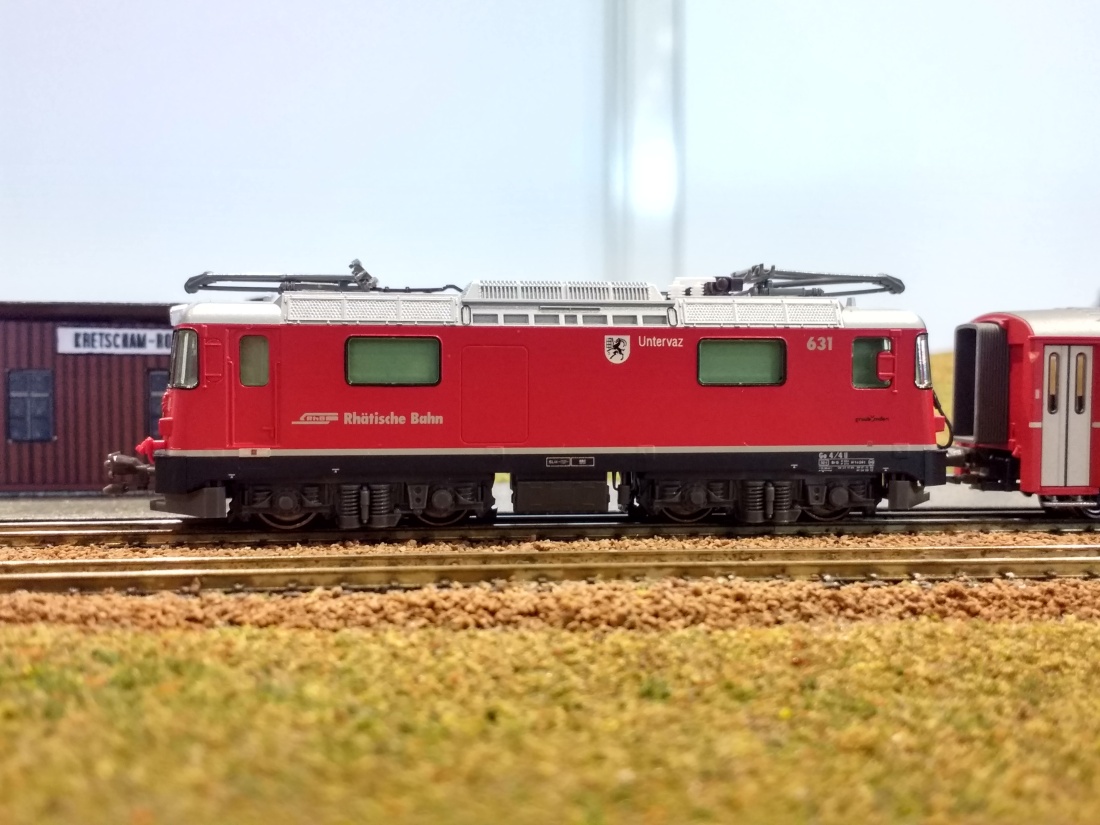

The method is more difficult than the other models, and requires more parts to be bought and made, so it’s best to know what you’re doing before starting work. Although this method works for me, I take no responsibility if it doesn’t work for you!
Parts and Tools
Method
Start by dismantling the bogie. There are clips in each corner to release the central section, and then push it, along with the wheels, upwards from the bogie frame. The pickups will fall free, and then the wheelsets can be removed and set aside.

 Carefully spread the Gear Tower, and remove the three gears. Be very careful not to damage the gears themselves.
Carefully spread the Gear Tower, and remove the three gears. Be very careful not to damage the gears themselves.

Axles
Pull each wheel and stub axle out of the black plastic gears.

Place a wheel in the multijig, and press down on the wheel to slide it along the axle. Repeat for all four wheels.

Push the wheels into the new 14 tooth gears, and check that the back-to-back measurement is 5.4mm with the multijig.

Check that the measurement across the points of each axle is 13mm.

Bogie Frame
Take the bogie frame and position it on the multijig. Drill through the jig to make two 0.8mm holes in the frame. Carefully countersink these holes to suit the 16BA screws.

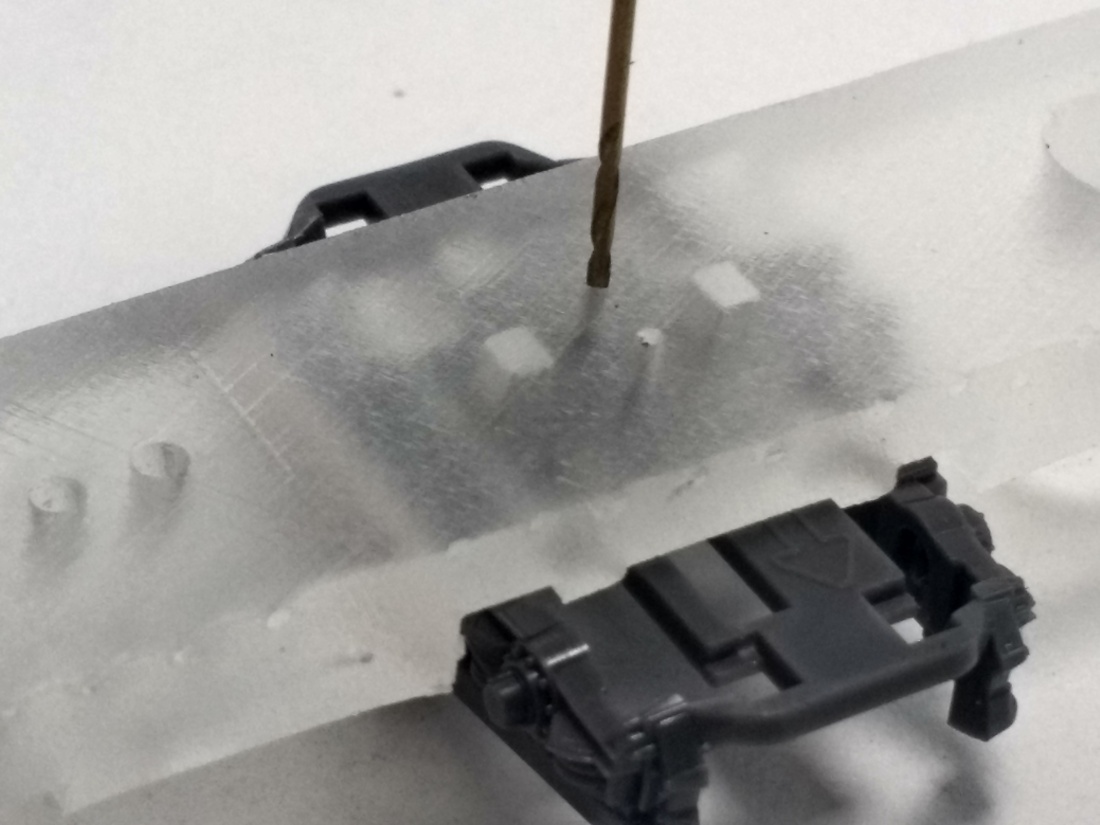
Now cut away the plastic base, leaving the central area and connection at both ends.

Re-assemble the bogie frame with both wheelsets and electrical pickups. It probably doesn’t matter which position the traction tyre is in within the bogie, but when re-assembling the loco they should be on opposite sides.

Gear Tower
Fit the end of the multijig to the side of the Gear Tower, and carefully drill a 0.8mm hole through. Repeat with the other side.

Take two 16BA countersunk screws, and cut them down using the multijig and flush cutters. File the ends clean with a needle file and check by screwing into a nut.



Take the Spacer Block and pass the Cheese Head screw through one of the holes, fitting a plain washer. Thread a 16BA nut onto the screw, and then tighten to pull the nut into the hexagon pocket. Remove the screw, and repeat with the other hole.
Fit the Spacer Block to the Multijig using the two countersunk screws cut down previously.

Check that the empty Gear Tower fits over the Spacer Block, and sits right down onto the jig.
Apply Cyanoacrylate Activator to both sides of the Spacer Block, and also the mating faces on the inside of the Gear Tower.
After allowing the activator to dry for a minute or so, apply a thin spread of Cyanaoacrylate glue to the sides of the Spacer Block, and then slide the Gear Tower over until it is firmly pressed against the multijig. Allow plenty of time for the glue to fully harden before moving on to the next step.

Using a 0.8mm Jewellers Cutting Broach, gently open the hole right through the Gear Tower and Spacer Block assembly, until the 16BA Cheese Head Screw just fits through.

Apply a small smear of Threadlock to the screw, and then run a nut along the thread until it is fully home, but do not tighten. This screw will provide support when the two sides of the Gear Tower are spread apart to fit the gears, otherwise the CA glue will fail very easily.
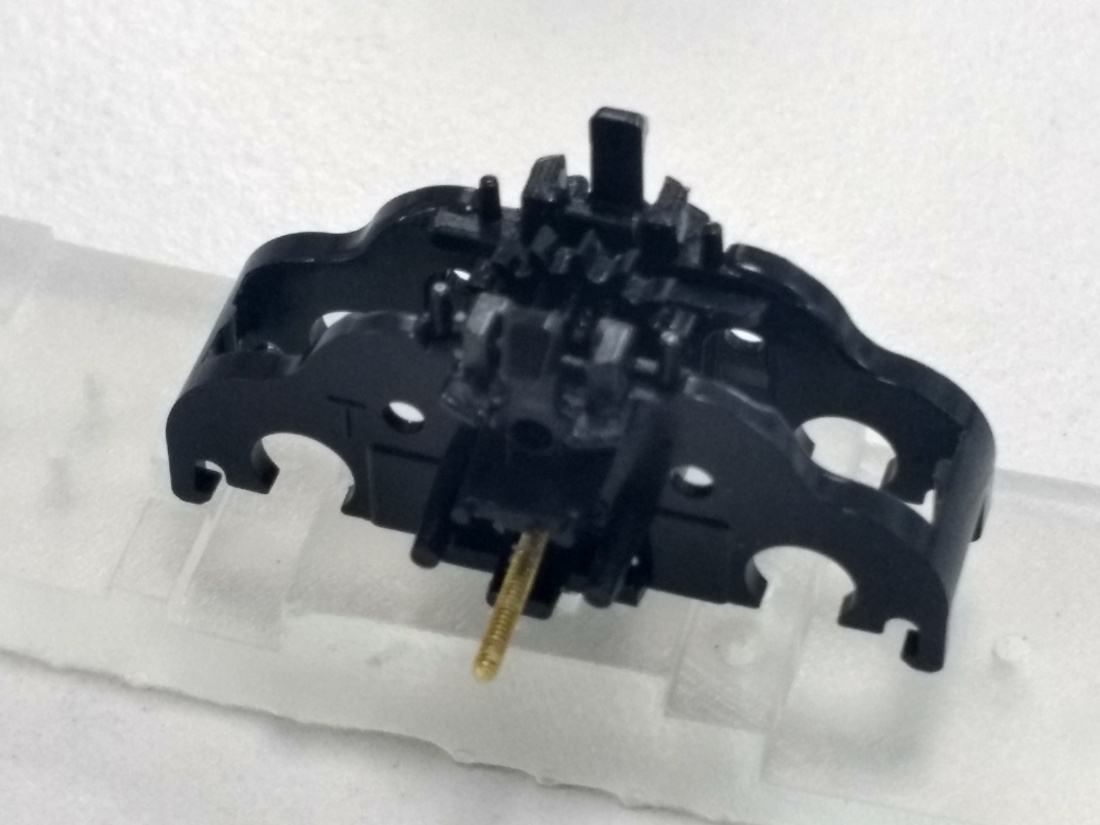
Gently fit the central gear, noting that it will only fit one way round. If you feel the glue crack, dismantle the assembly, clean it up and start again.
Tighten the 16BA screw while turning the central gear, until it starts to bind, then back off the pressure so that it is free to spin again. Leave the assembly for a while for the threadlock to harden.
With flush cutters, nip off the long end of the screw.
After everything is dry and fully hard, remove the two countersunk screws holding the assembly to the multijig.
Cut the ends off the Gear Tower using Flush Cutters facing away from the Spacer Block, to avoid any shock to the glued joint.

Fit the end of the multijig over one side of the gear tower, and cut the plastic back to the edge of the jig. TAKE GREAT CARE HERE. The cut is very close to the axle hole for the idler gear, and this should not be distorted. Do not be tempted to cut too much away in a single cut: take several small cuts until reaching the final shape.

Check that there is no excess glue at the joint of the Gear Tower and Spacer Block. If there is, then gently remove it with a scalpel.
Gently re-fit the idler gears to the Gear Tower, and check that everything spins freely.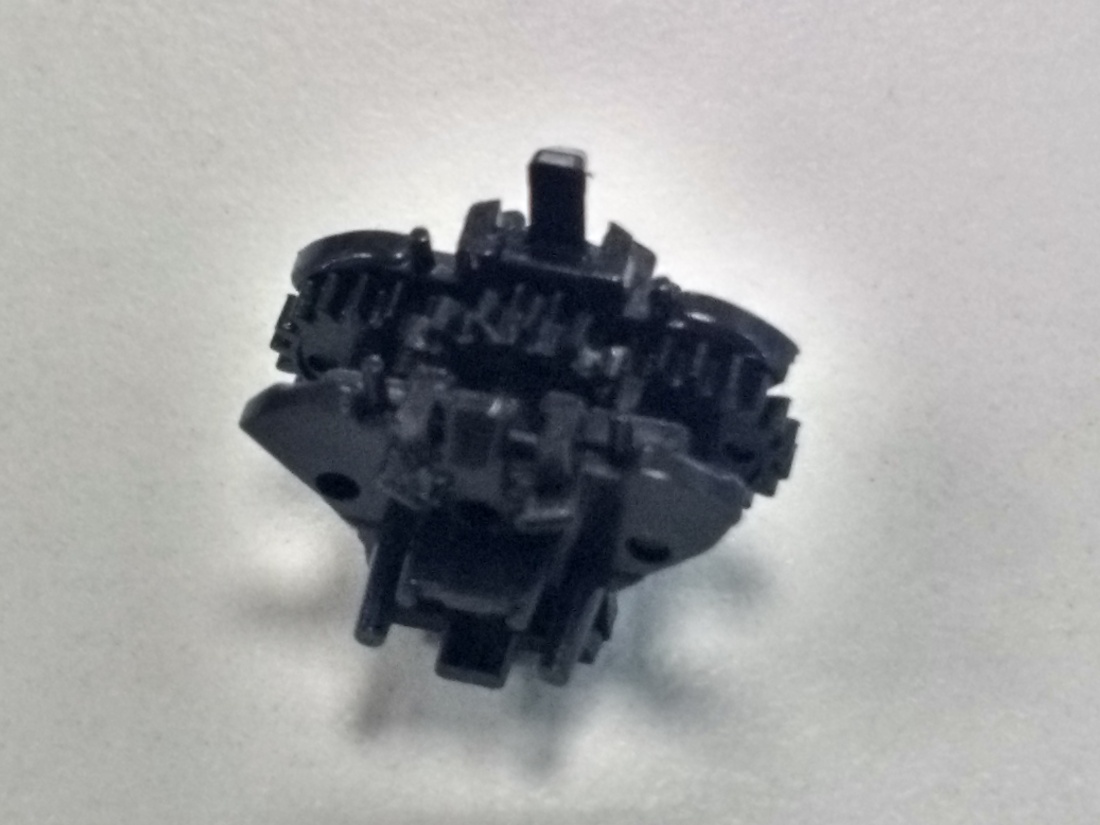
Assembly
Fit the Gear Tower into the Bogie Frame.
Apply a small smear of Threadlock to the two 16BA Countersunk Screws. Fit the two 16BA Countersunk Screws through the holes in the Bogie Frame, and into the Spacer Block. Be careful not to push the nuts out of their holes. Tighten the screws while checking the mesh of the whole geartrain.
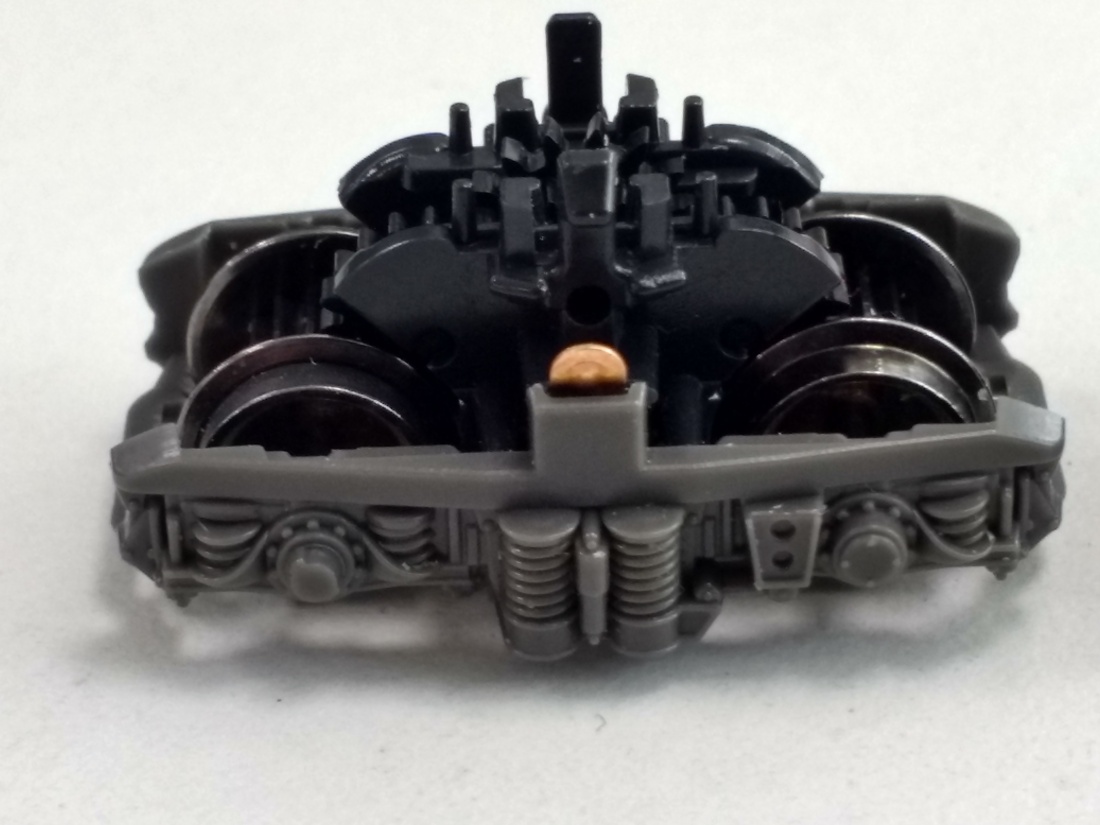
Everything should be free to rotate, with no tight spots or cogging. If there is, then dismantle the assembly and try again.
Fit the bogie into a loco and give it a test run! I modified two locos and ran them for all four days of Modellbahn Süd 2018, and everything went well. They ran smoothly and capable of very low-speed crawling, even the one which used the first bogies I modified, which were rather tight.

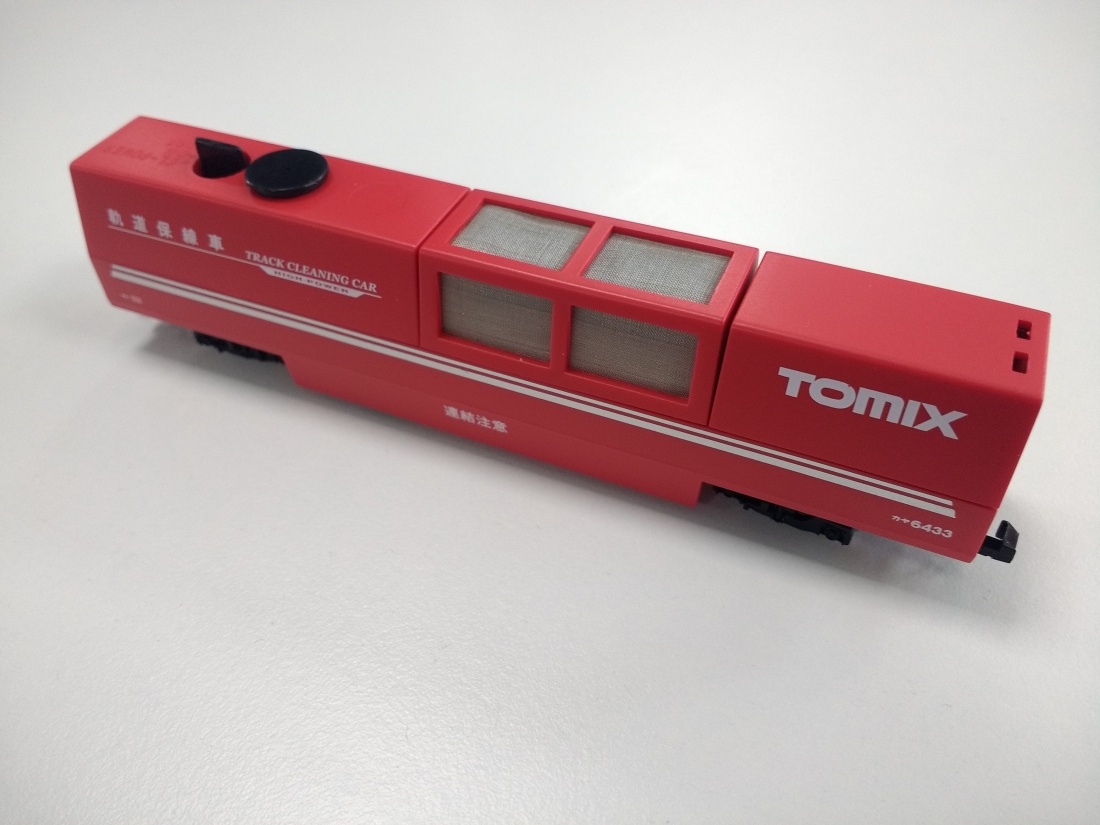
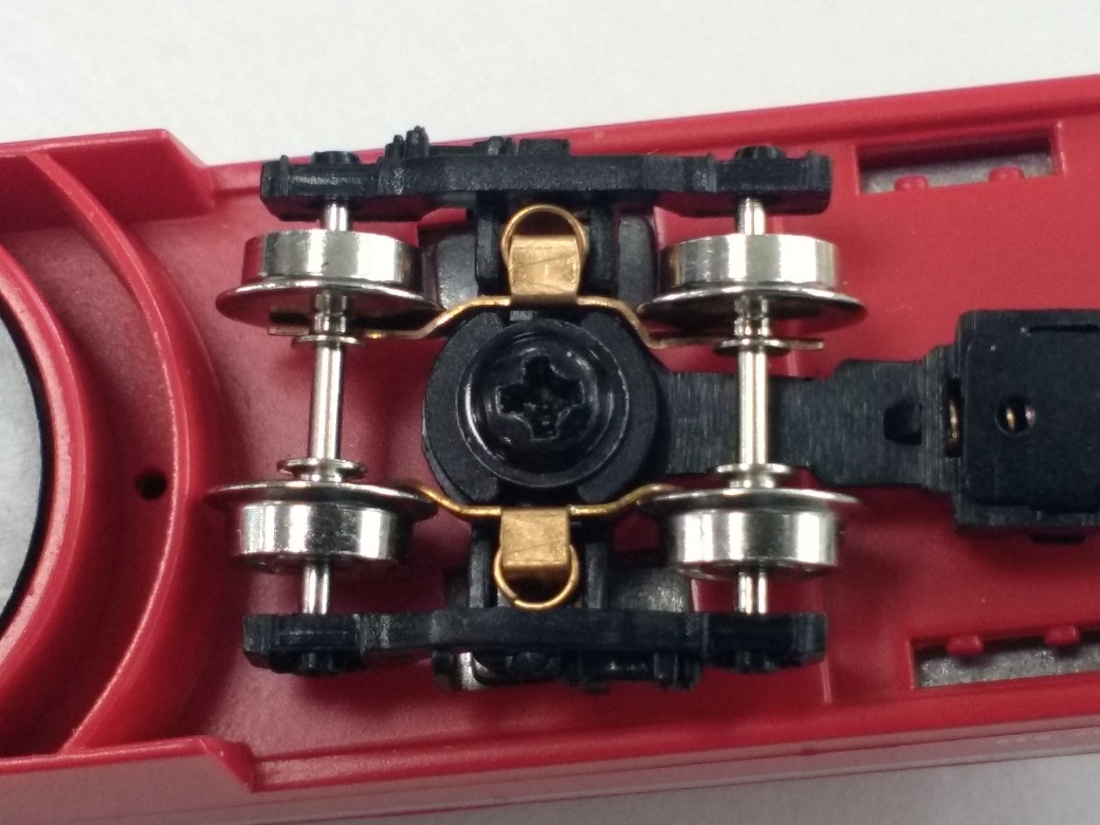



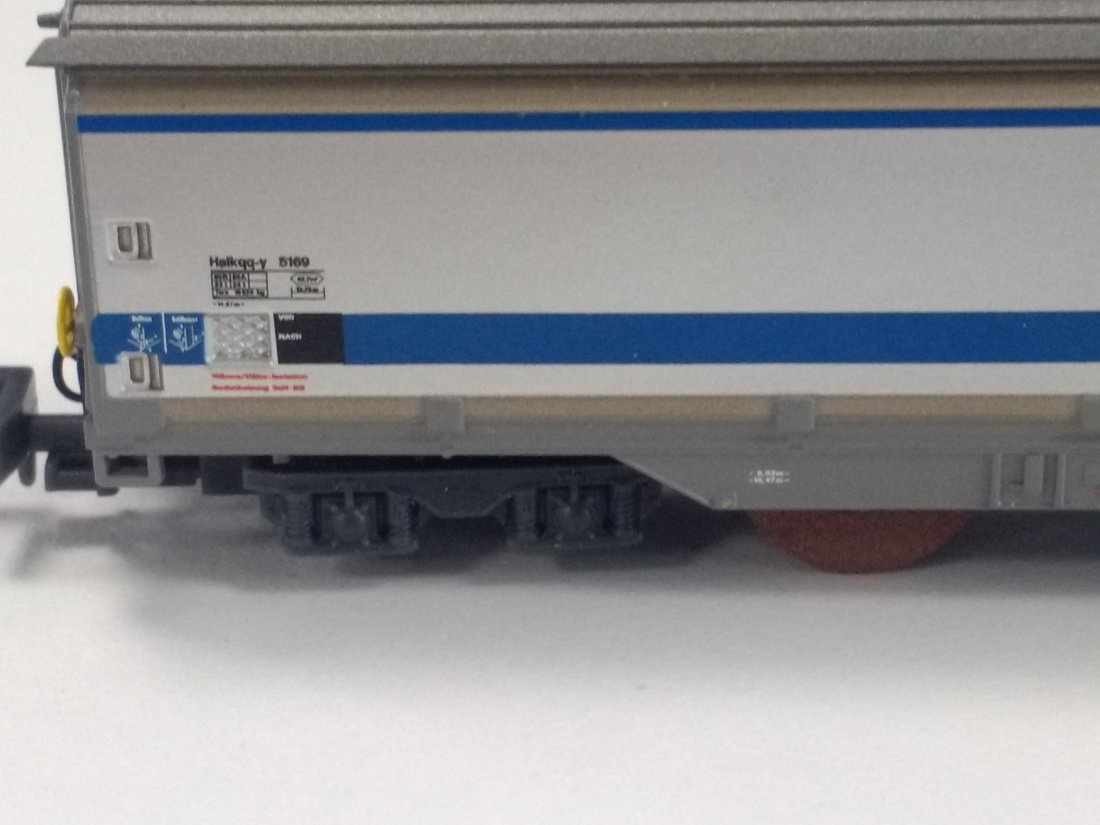
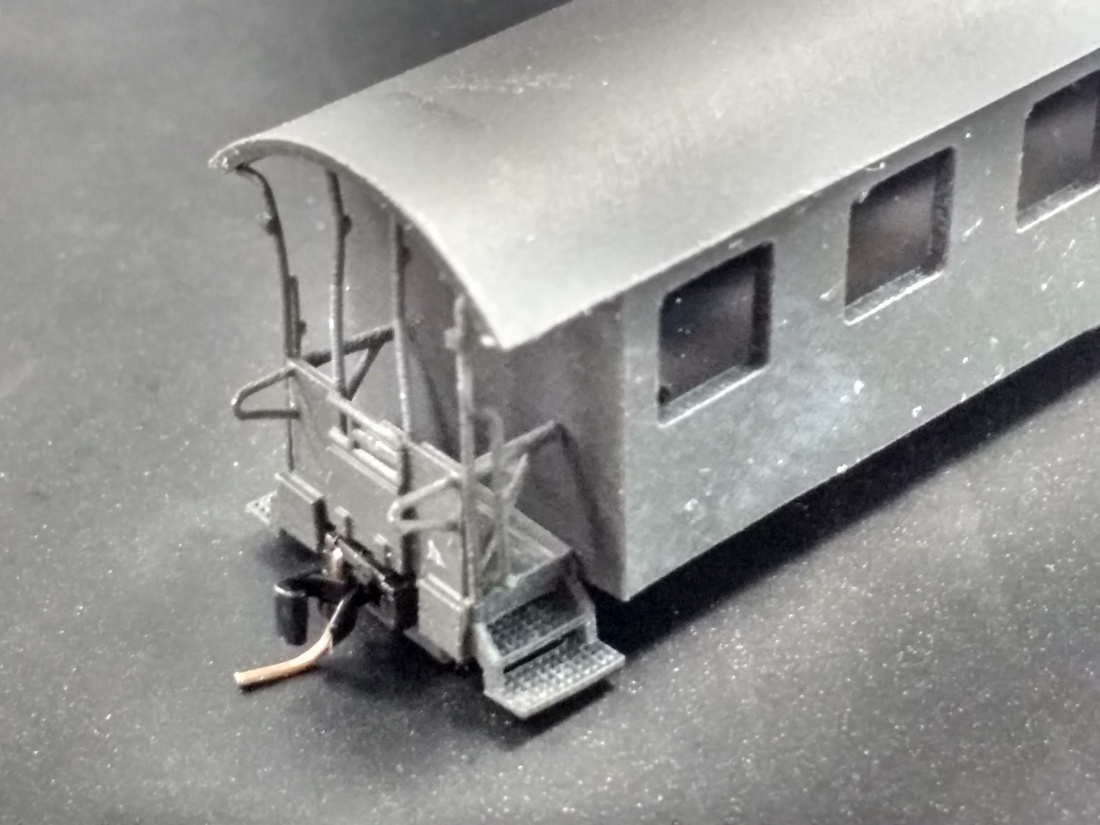



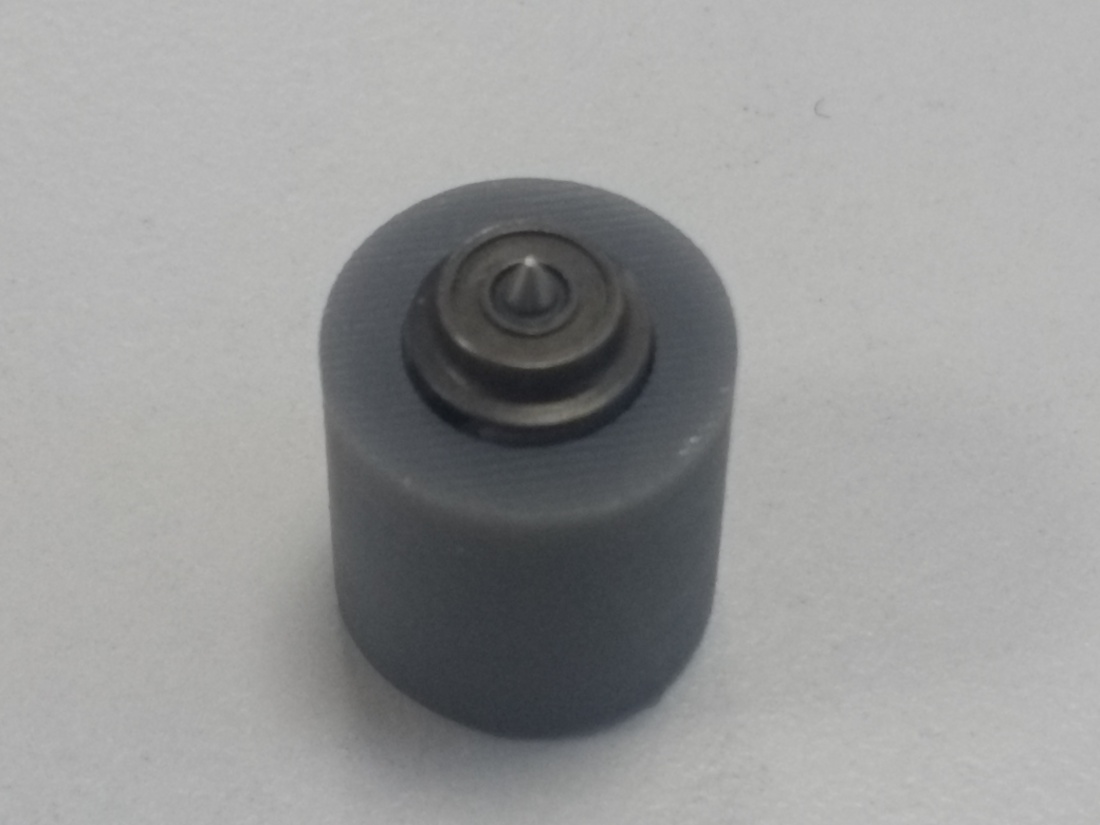











 Carefully spread the Gear Tower, and remove the three gears. Be very careful not to damage the gears themselves.
Carefully spread the Gear Tower, and remove the three gears. Be very careful not to damage the gears themselves.





















